This article has been updated for Google Analytics 4.
If you’re ready to harness the power of numbers to optimize your Etsy shop but haven’t installed (or upgraded) Google Analytics yet, don’t wait any longer!
Here are my instructions for connecting Google Analytics 4 with an Etsy shop.
1. Make sure you have a Google login
You’ll need a Google login to use Google Analytics. A login for a “Google account” is different to a “Google Analytics Account”: it’s a username (email) and password to access any of Google’s huge suite of products.
If you already use Google products, like an Android phone, Gmail, YouTube, Google Nest, Google Docs or Drive, Google Ads etc., you already have a login for a Google account.
If you know that you do NOT use these products yet, you’ll need to create a login.
Should you create a new login for your business?
If you already have a personal Google account, you can use that same account for Google Analytics or you can create a new one just for your handmade business. Your decision will probably depend on the size of your business and how much you want to separate your online activities between business and personal.
Whichever you choose now, you are not locked in. You can transfer your Google Analytics to a different login later!
Figure out your next step:
| Do you already use other Google products? | |||
| YES | NO | ||
| Is your login just for your handmade business? | Create a new Google login Go Step 1.a) | ||
| YES | NO | ||
| Login with this account Skip to Step 2 | Do you want to keep your business analytics, emails, files etc. separate to your personal Google stuff? | ||
| YES | NO | ||
| Create a new Google login for your business Go Step 1.a) | Login with this account Skip to Step 2 | ||
2. Setup your Google Analytics Account
2.a) Login to Google Analytics
Go to https://analytics.google.com
If you see a “Sign In” form, login with your Google account login details.
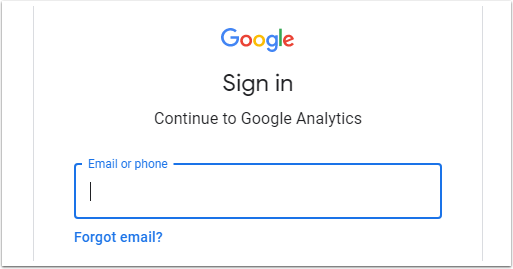
2.b) Check what you already have setup in Google Analytics (if anything)
If you’ve never used Google Analytics before, you’ll see a screen like this:
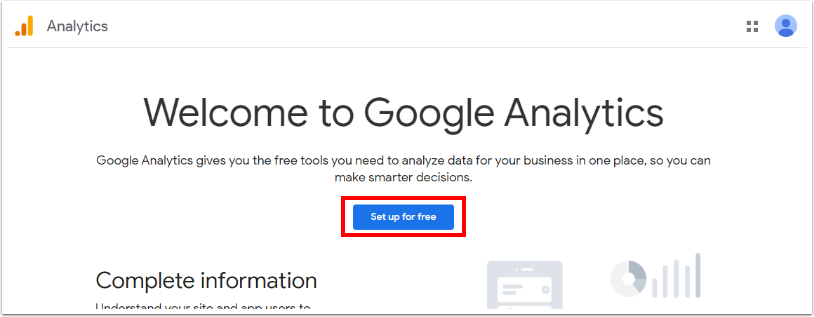
If you see any screen that shows you reports, data or the option to select settings, that means you’re already using Google Analytics for something.
If you already use Google Analytics for this business, but not for Etsy, you’ll create a new Property in your existing Account.
If you already use Google Analytics with other platforms where you sell the same products as on Etsy (i.e. for the same business, but on different websites), you should create a new Property within your existing Account.
If you’re already using Google Analytics for your Etsy shop, check which version it is.
Check the menu in the top-left corner to see if you have GA setup for Etsy.

You’re looking for something like this:

If you see a listing for Etsy that is followed by ONLY NUMBERS – that is your GA4 Property. (It was probably created for you automatically.)

If you do not see anything listed that’s for Etsy or you only have a “UA-” Property for Etsy, you will need to create a new GA4 Property.
Figure out your next step:
| Are you already using Google Analytics? | ||||
| YES | NO | |||
| Is it for the same business as your Etsy shop (eg. Shopify)? | Create a new Account Go to Step 2.c) | |||
| YES | NO | |||
| Is it for the same Etsy shop? | Create a new Account Go to Step 2.c) | |||
| YES | NO | |||
| Do you already have a GA4 Property for Etsy? | Create a new Property Skip to Step 3.b) | |||
| YES | NO | |||
| Check settings & connect to Etsy Skip to Step 3.c) | Create a new Property Skip to Step 3.b) | |||
3. Setup your Google Analytics 4 Property
4. Connect Etsy to Google Analytics
4.a) Copy your Measurement ID from your Google Analytics 4 Property
If you still have the Measurement ID on your clipboard from when you just created a new Property, skip to Step 4.b). If not, or you aren’t sure, follow these instructions to copy it.
4.b) Paste the Measurement ID into Etsy
Login to Etsy and open Shop Manager > Settings > Options > Web Analytics [tab]
Paste your Measurement ID into the “Web Property ID” field
Click [ Save ]
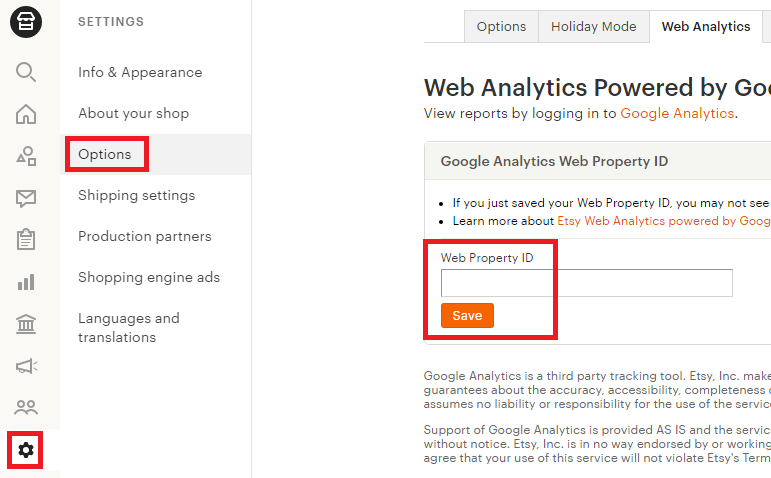
5. Check it’s all working
It will take up to 48 hours for numbers to appear in your Google Analytics reports (though it’s usually closer to 2 or 3 hours). But you can test your connection straight away.
1. Login to Google Analytics and open the Realtime report
(If you have more than one website using GA, make sure the correct one is selected in the top-left dropdown!)

2. In a new browser tab or window, open one of your Etsy listings.
You must open a LISTING for Google Analytics code to run on your shop. Etsy does not run our tracking code on our shop home pages anymore.
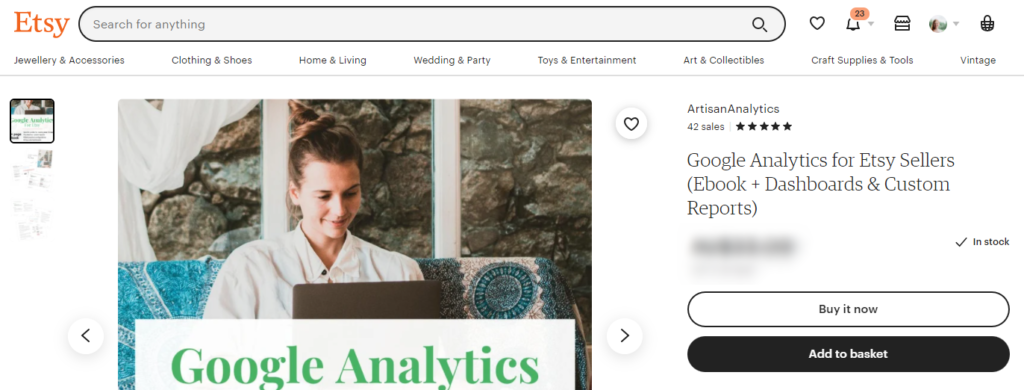
3. Back in Google Analytics, wait a few seconds and make sure that a number appears in the top-left of the report, in “Users in Last 30 Minutes”.


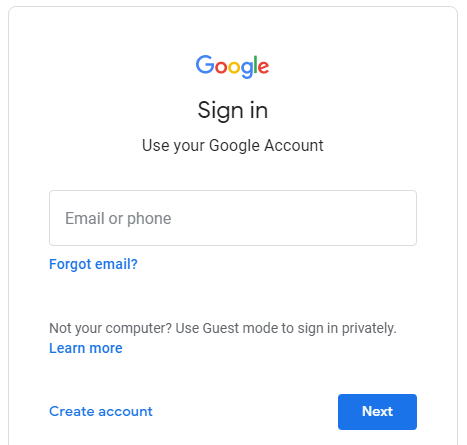
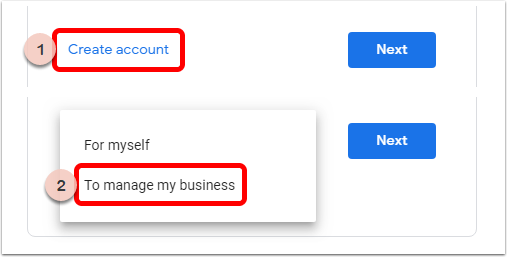







Comments (26)
Hello, in the article it states to use “Website URL = https://www.etsy.com”
However, Etsy’s documentation says “When asked for your Website’s URL, enter the Etsy URL for your shop (www.etsy.com/shop/shopname)”
What is the correct way to do it so that things are tracked correctly?
Ref: https://help.etsy.com/hc/en-us/articles/360000337927-Web-Analytics
Hi Adam! The “Website URL” doesn’t affect the tracking at all, so no matter what you enter, your shop will be tracked correctly as soon as you put your UA ID into your Etsy settings.
This URL is used to create the links from your All Pages report back to your Etsy shop. If you enter what Etsy says, those links will be broken. If you enter “https://www.etsy.com”, they’ll work.
Occasionally, you might get a “tracking code not found” notice because GA checks Etsy’s home page and doesn’t find your tracking code. But this check is only a courtesy and isn’t related to whether your code is working or not on your shop’s pages.
Albiet a few months late, thank you, Lesley. I’m back after hearing your interview on Etsy Conversation Podcast to make sure I’ve done all this correctly.
This is a huge help and your directions were spot-on. Thanks! Good Stuff!
This was so helpful. thank you!
thanks for such easy peasy setup steps
This helped me way more than the Etsy official help! thank you very much 🙂
Thank you so much for preventing me from tearing my hair out! This was SO helpful!!!
Hi Lesley! Thank you for this! I was wondering — is it possible to track which traffic source is converting into sales on my Etsy shop using Google Analytics?
Thanks for stopping by, Melanie! Unfortunately, Etsy does not let us track sales directly into Google Analytics but you can start here to find individual buyers and build up a picture: https://www.artisananalytics.com.au/blog/find-etsy-buyers-in-google-analytics
If we try to test our traffic right away the way that was shown, will it work right after setting up? I followed the directions, but I am not seeing the 1 person online even though I have my shop page open.
Yep, same here. Nothing showing
Try testing by viewing a listing page, not your shop home. Etsy has recently made some changes, which I’ll be posting an update on very soon!
I was having the same issue, but I didn’t realize that you can’t be logged in to your Etsy account. Once I logged out, (I think that’s the reason Lesley’s instructions direct us to open Etsy in another browser) I was able to see myself as an active user.
Thank you so much for your detailed instructions. I have my account set up for my ETSY shop and now I am trying to add a property account for my Pattern site with my own domain. I’m doing something wrong. Just wondering where we put the website URL should I put my domain or the pattern domain. I’m thinking that’s where I went wrong?
Thank you – I was literally going around in circles trying to work this out and you saved my life!
Hi… Thankyou kindly for this tutourial.
This question relates to whether I should Create a New Account or New Property.
For e.g.
Say I had http://www.batman.com for the last 20 years (Google Analytics /Adsense etc).
Ok… now I have 2 new websites that I just registered….
http://www.superman.com and http://www.wonderwoman.com
All 3 websites sell different products totally different from one another.
As you stated above kindly…
“If you already use Google Analytics with other platforms where you sell the same products as on Etsy (i.e. for the same business, but on different websites), you should create a new Property within your existing Account”………
Do i create a New Account for each one and then fillin details in the next panel…(the New property section… ( Click [ + Create Property ] at the top of the middle column)…
…….
or do I just create 2 New Properties under my http://www.batman.com Account which is the only one listed?
ANy info greatly appreciated.
Kind Regards
Hi Rob,
Great question! My general advice is more about keeping a tidy account that’s easy to navigate and understand. There is no technical reason to set it up in any particular way and you can move Properties between Accounts later, if you change your mind.
Will you be selling under each of these brands on both a standalone website (eg. batman.com) and Etsy store (eg. batman.etsy.com)? If yes, then do create a new Account for each as you will have two Properties for each (one for standalone website and one for Etsy). Six properties under one account might get confusing!
If you manage these three sites “behind the scenes” as totally separate businesses (eg. separate finances), then I also suggest creating a new Account for each one. If not (and you’ll only have one website per store), go ahead and create new Properties in your existing Account.
You’re not locked into whatever structure you choose. If you ever run into trouble or limitations with it, you can transfer properties between accounts later (either to split or combine them).
Hope that helps!
Lesley
Hi Lesley, Thanx heaps for your quick reply… I came across 3 websites that really compliment your brilliant answer.
I just thought I shared it with you and newbies because all answers are given on these websites in very informative ways a bit different from each other.
Feedback on your blog:
I really appreciate the time and effort you put into this blog with excellent, clear and concise diagrams. Keep up the outstanding work! Have a Great Day!
Google Analytics Account limit and Property Limit
https://analytify.io/google-analytics-limits/
In standard Google Analytics, you can set up 100 accounts and can add 50 properties per account which means you can create 100 accounts and a Google Analytics account contains 50 properties or websites.
Google’s – Example account structures
Overview of two Analytics accounts
https://support.google.com/analytics/answer/1102152?hl=en#zippy=%2Cin-this-article
How to Set Up & Use Google Analytics Across Multiple Websites
https://databox.com/how-to-use-google-analytics-across-multiple-websites
Databox sums it up well…
In sum, if you have multiple websites, there are two main ways to configure Google Analytics.
• You can add all of your sites as different properties under your main account.
• Or, you can add multiple sites in your main Google Analytics as unique accounts.
Thank you for the clear and useful article
That worked very well, thank you!
Thank you SO much. I was lost with Etsy’s directions, and Google Analytic documentation wasn’t great either. This completely clarified and help me do it quickly.
Also, a note for people who are not seeing anyone Realtime when they test it – you MUST be logged out of your Etsy seller account – it didn’t show me as exploring my site until I did that.
Thank you for these instructions. I am having one small problem in that there is no “show advanced options” in the location /time / currency setup page and therefore I can’t get an ID starting with UA- I can only get a ‘measurement ID’ starting with G- and Etsy says this is invalid in their property ID text field.
Suggestions? Is there somewhere else in the Analytics settings I can generate this ID format?
thank you
Hello… sorry… I just realized that the ‘show advanced options’ only appears during the initial setup stage. I was thinking I might be able to go into that property and generate a UA ID but that’s not the case. Anyway, all set up and Etsy accepted the UA ID. Phew. Done. Thank you!
I am so thankful to have come across this website. Thanks for the good advice.
Cheers Tilda
Thank you! does this still capture data if they are browsing from the app? or only from the website on a computer?